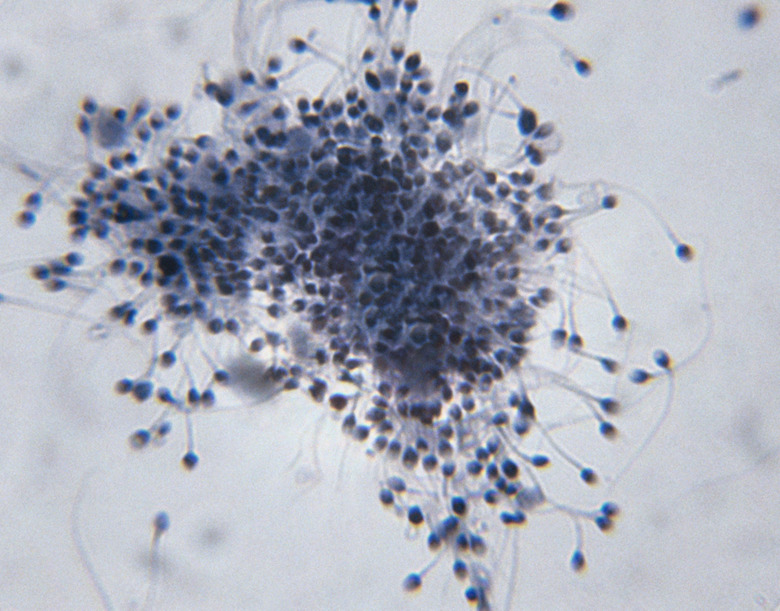What Is The Order Of The Sequence Of Events In The Fertilization Of An Egg?
When most people imagine fertilization, they picture cartoonish, tadpole-like sperm swimming rapidly toward an egg, crashing into it and – voila – magically creating human life. In truth, fertilization is less a single event and more a lengthy process.
TL;DR (Too Long; Didn't Read)
For fertilization to occur, freshly ejaculated sperm must undergo several hours of hyperactivation so they are ready to swim. Once the sperm cells and egg cell meet, a series of complex reactions allows the egg to bind the sperm and release enzymes in the tip of the sperm that enable the two cells to fuse. The separate bundles of genetic material inside the egg and inside the sperm come together to form the pronucleus of a single cell. This cell is a zygote and has the potential to become a human baby.
Sperm Cells, Activate!
After ejaculation, the first several hours leading to fertilization happen before the sperm cells and egg cell even meet. Approximately 180 million sperm cells congregate in the reproductive tract, shedding excess proteins that ejaculated with them and reorganizing their plasma membranes until they are hyperactivated and ready to swim toward the egg.
Egg, Meet Sperm
With their newly activated tails, the sperm cells navigate toward the egg cell. The egg cell has an outer ring called the zona pellucida, which contains sperm receptors. The egg uses these receptors to catch the sperm, and the very tip of the sperm cells, called the acrosome, begins to release enzymes. These enzymes, along with the action of the motile tails of the sperm, help the sperm cells move through the zona pellucida and fuse with the plasma membrane of the egg cell.
Egg Cell, Activate!
The instant when the egg cell's plasma membrane fuses with one sperm cell is a big one because it sets the stage for two important events. The first is the zona reaction, which hardens the zona pellucida and shuts down the sperm receptors, blocking any other sperm from binding with the egg cell. The second is egg activation, which includes rapid physical and metabolic changes and the completion of specialized cell division called meiosis.
Two Cells Become One Cell
After the egg cell and sperm cell fuse, the head region of the sperm cell absorbs into the cytoplasm of the egg cell, releasing the nuclear envelope and freeing the chromatin, which is the material destined to become chromosomes. The chromatin from the egg cell and the sperm cell come together to form a pronucleus where the chromosomes begin to pair.
This newly formed single cell that contains the genetic material from both the sperm cell and the egg cell is a zygote. This zygote spends several days dividing until it is ready to implant in the uterus. With luck, the fertilized egg eventually becomes a baby human.
Cite This Article
MLA
Mayer, Melissa. "What Is The Order Of The Sequence Of Events In The Fertilization Of An Egg?" sciencing.com, https://www.sciencing.com/order-sequence-events-fertilization-egg-10375/. 4 May 2018.
APA
Mayer, Melissa. (2018, May 4). What Is The Order Of The Sequence Of Events In The Fertilization Of An Egg?. sciencing.com. Retrieved from https://www.sciencing.com/order-sequence-events-fertilization-egg-10375/
Chicago
Mayer, Melissa. What Is The Order Of The Sequence Of Events In The Fertilization Of An Egg? last modified March 24, 2022. https://www.sciencing.com/order-sequence-events-fertilization-egg-10375/
